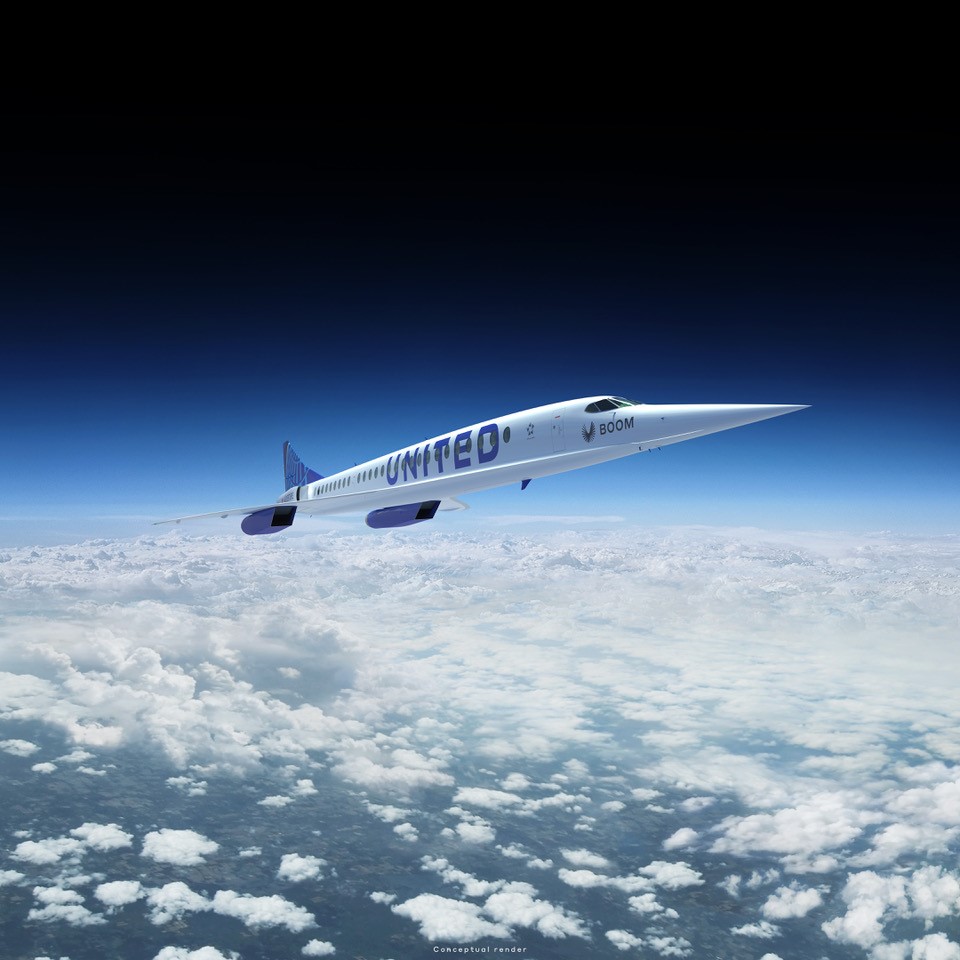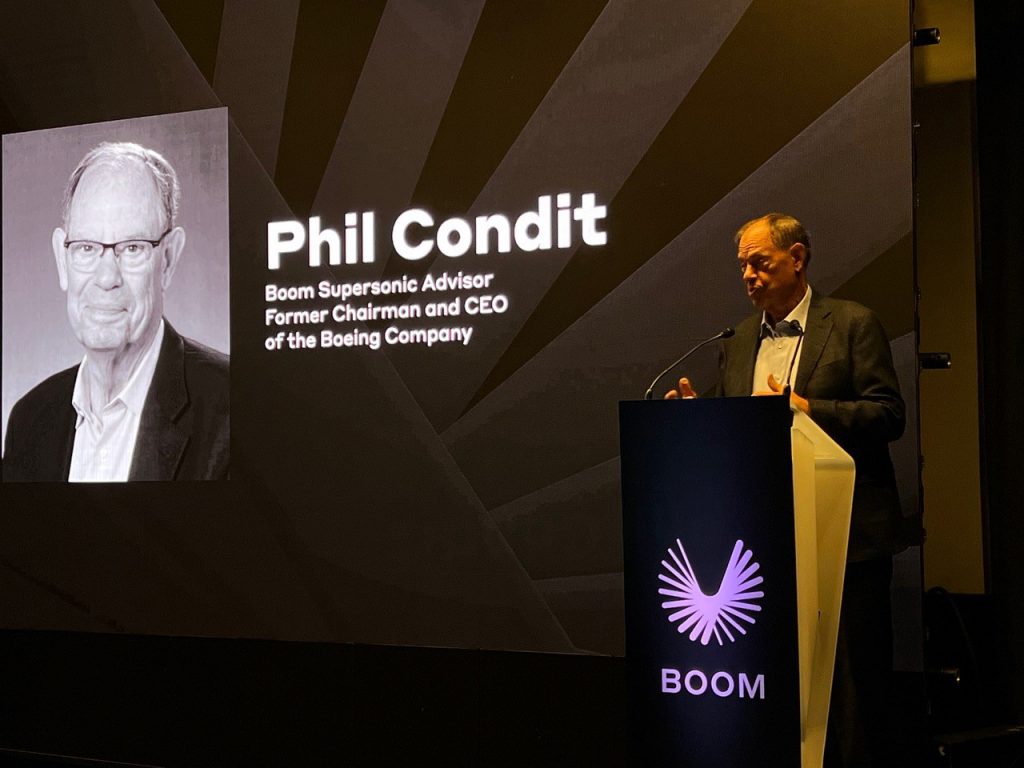Ex Boeing Boss Works on SSTs Again
12 July, 2023
7 min read
By joining our newsletter, you agree to our Privacy Policy


Ex-Boeing boss Phil Condit is again working on SSTs with Boom Supersonic but its boss, Blake Scholl, is coy on questions at last month's Paris Airshow.
JOIN: AirlineRatings.com YouTube Channel
GET: Accurate MH370 Information From AirlineRatings.com Newsletter
SEE: GT’s Radar Slams Netflix MH370 Doco
“So much has changed since we last met here in Paris, of course in the world, but also here at Boom.” That’s how founder and CEO of Boom Supersonic, Blake Scholl, opened his press conference during what was his third Le Bourget air show in June.
Observers noticed how much had changed in Boom’s own appearance since the company first exhibited in Paris in 2017. Before, the company and its CEO had small chalets but were very open to discussions with everyone, even eager to talk to the press.
This time was different: No interviews with Blake Scholl for any media before or during the show, fairly unusual for a start-up. Instead, a huge chalet, only slightly smaller than those of the major players in Paris, was guarded by security reluctant to let anyone enter.
Otherwise, Boom appeared publicly only for a carefully scripted press conference with Blake Scholl (below), where he took very few questions and gave almost no hard facts beyond his official statements. Attempts by journalists to speak to him afterwards were actively discouraged, and Scholl refused to answer.

In his official announcements, he revealed structural suppliers for Boom’s planned Overture supersonic airliner and its wings, fuselage and empennage plus more details about the Symphony engine architecture.
While Boom’s XB-1 one-seater test aircraft, which was originally supposed to have its first flight in late 2017, still hasn’t flown, Scholl presented the original timeline for Overture again, with its roll-out earmarked for 2026, first flight in 2027 and certification in 2029.
The original plan was to validate and possibly adapt Overture’s concept after the results of the XB-1 tests are in. These have been delayed for over four years, but Scholl wouldn’t comment on why he still sticks to the original Overture timeline nevertheless.
Referring to XB-1, he didn’t give any updates, other than saying that the aircraft had recently been moved to the Mojave Air And Space Port “progressing toward first flight.” A spokeswoman for Boom later answered Airlineratings.com’s query in writing: “The intention with XB-1 was to build a small-scale demonstrator using existing certified technology to show that supersonic flight is possible. We took all of the lessons learned from XB-1, as well as developed a robust safety culture because of this program and applied this to Overture. The programs technically diverged years ago and each has different objectives and missions. We have significant support from our world-class suppliers and remain confident with the milestones we have laid out with Overture.”

While the company’s appearance in Paris didn’t make the many sceptics questioning the viability of Overture and Boom’s actual capabilities change their minds, the firm had one ace up its sleeve: The surprising re-appearance of legendary former Boeing CEO Phil Condit. Now 81 years of age, Condit hadn’t been to the Paris Air Show for two decades. As a young engineer, he joined Boeing in 1965, initially working on the aerodynamics of the Boeing SST project before he became a lead engineer on the Boeing 747 high-speed configuration in 1968, three years before the SST was cancelled in 1971. He was the general manager of the 757 division and in the same role at the 777 program. Rising through the ranks, he became President of Boeing in 1992, CEO in 1996 and chairman in 1997 before resigning in 2003, taking symbolic responsibility for a military corruption scandal. Since 2021, Condit has acted as an advisor to Boom. “I began my career almost 60 years ago, working on the Boeing SST. And so now I get to go full circle,” said Condit. “I get the privilege of advising as Boom designs and brings to production a sustainable, supersonic airliner.”
In talking to Airlineratings.com, Condit said: “The Boeing SST was a great experience, I learned a lot. It was a big titanium aeroplane, at the time we believed in the concept very much. One of the lessons we’ve since learned is that small is beautiful, point-to-point travel is great, and you need the right size airplane if you want to go from Miami to Barcelona as opposed to big hub to big hub. A small supersonic makes immense sense with the right pieces coming together,” Condit stressed.

He counts as the most significant technological enabling technologies the new optimized Symphony engines and their inlets, the composite primary structure and pilot vision systems. “We now have so much experience in composite technology that was not available at that time, also new engine technology. So the whole design philosophy is very much different.”
About his own role at Boom, Phil Condit says: “Things I’ve been able to contribute are how do you build a great engineering team, how do you build engineering and safety excellence, these are the things I’m working on with Blake. They’ve done a great job of listening, which I appreciate.” Overall he is convinced: “All comes together to make a reliable supersonic transport. Supersonic flying will be part of the aviation scene, that makes total sense.”
Airlineratings.com also had a chance recently to talk to United Airlines CEO Scott Kirby about the carrier’s engagement with Boom. In June 2021 United had announced its intention to purchase 15 Overture and take options for 35 more – “once Overture meets United’s demanding safety, operating and sustainability requirements,“ as was stated then. “Our customers love it and want it and it’s not the 1950s (sic) technology that the Concorde was, the technology is obviously advanced,” Kirby told Airlineratings.com
“I think it’s doable. It’s not a guarantee, it’s not done yet, but it’s doable. This is an opportunity to move the next generation forward. And United is a natural launch customer for that airplane, given where our hubs are and our position around the globe.” Primarily United would be flying Overture out of Newark and Washington-Dulles to places like Paris and London, at least to start. “Ultimately you’ll get the technology far enough advanced that you can go to Asia, which I think would be the bigger opportunity if you could ever go from San Francisco to Asia. As a one-stop, it’s not attractive.” That is what Boom currently proposes.
Kirby seems to be convinced there is a realistic chance of Boom’s grand plan to become reality while acknowledging it’s also not a given at all yet that it will. “I talk to Blake Scholl a lot and everything seems to be on track. I acknowledge there are big hurdles that they have to overcome, engines mostly. But they got the right design firm for the engines. That’s the first step. Once the engine is designed you can figure out how to manufacture it.” But then, Scott Kirby wouldn’t bet on a commercial premiere of Overture by the end of this decade: “It’s hard to give an entry into service date, in my history in aviation, everything always takes longer than projected.”

Next Article
Virgin gets nod for Tiger deal

Get the latest news and updates straight to your inbox
No spam, no hassle, no fuss, just airline news direct to you.
By joining our newsletter, you agree to our Privacy Policy
Find us on social media
Comments
No comments yet, be the first to write one.






